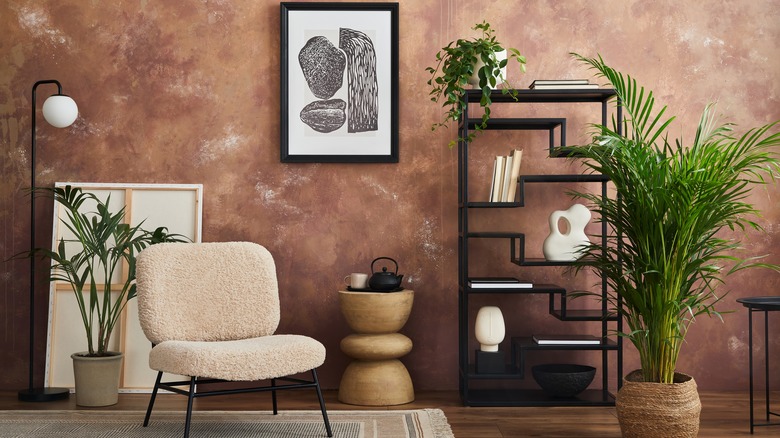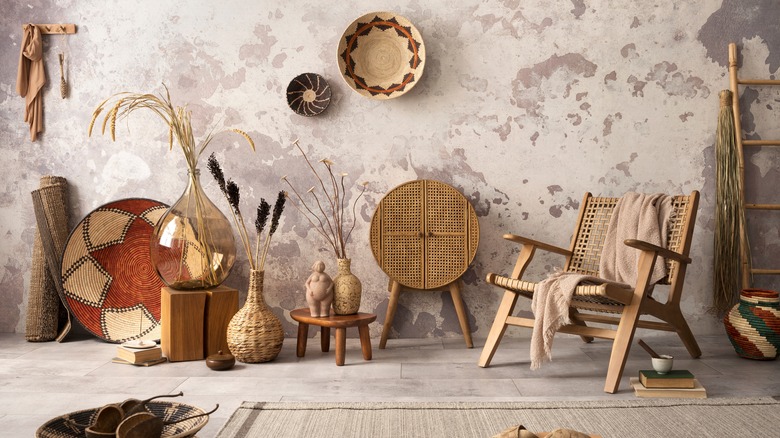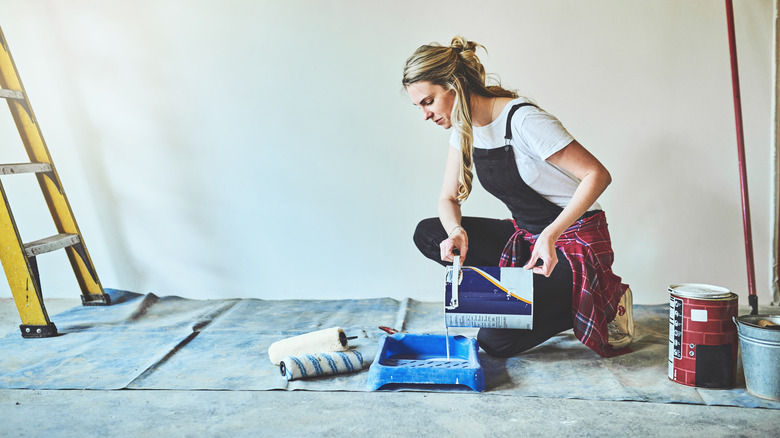What It Means To 'Antique' Your Walls
The walls bear a unique distinction of setting the stage for virtually everything else in our homes. Bathe them in different strokes of color, spruce them up with striking patterns, or stick to that minimalist neutrality; they're definitive of your style. But there exists a middle ground in this wall art narrative: a chance to hoist your style flag while connecting with the timeless charm of yesteryears. Say hello to antiquing, the art of applying an aging and discoloration effect on surfaces to make them appear delightfully dated. You can expect the same rich texture and intriguing tones you love on your refurbished, rustic cabinet but on a canvas several magnitudes greater — your very wall. As for painting techniques for walls applicable here, color washing and distressing lead the narrative.
The rewards of antiquing your walls are plentiful, primarily touching on aesthetic, functional, and economic aspects. Picture your formerly bland walls now transformed into a brilliant canvas radiating a charming sense of depth and dimension. It's also a creative exercise that allows you to disguise imperfections and generate a tailored aesthetic design that marries the old and the new. However, journeying down the antique road is no haphazard affair – a harmonious choice of colors, accurate use of tools, and the correct blending technique are pivotal to your success.
Wall antiquing is more than just aesthetics
Antiquity adds character to any living space. Do you own a house older than the invention of disposable cameras? Picture your guests believing they've stepped into a charmingly authentic historic home. This rustic design also offers a soothing balm to the relentless pursuit of perfection by covering those little blemishes on your walls in delightful masks of time-tested beauty. Plus, you get an opportunity to add a touch of personal sentiment to your home. And if you fancy a painting approach that lends itself to everything from the inviting atmospheres in country cottages to grand estates' opulent, high-ceilinged spaces? Antiquing's versatility might be the answer.
Let's talk about color washing and distressed painting. Think of color washing as the gentler cousin, a more subtle approach that involves layering and combining glazes on a painted surface to create the desired aged appearance. As color marketing and development expert Nivara Xaykao described it further to Apartment Therapy, "It harks back the romance of the Old World and elegant interiors with sculptural plaster walls." Conversely, distressed painting gets up close and personal with your wall. It involves intentionally distressing the top layer of paint to reveal a different color beneath, creating a raw and rugged effect that mimics years of wear and tear. But while antiquing might not be as demanding as a prima donna, it sure appreciates a little harmony between colors, textures, and other elements in a room.
How to make a wall look old with paint
Begin with gathering your wall antiquing arsenal. You'll need paint (preferably in two shades), transparent glaze, a paintbrush or roller, a paint tray, goggles, gloves, and sandpaper. Throwing in a bit of your elbow grease won't hurt, either. A good approach to paint selection would be to harmonize your choice with other elements in the room. But should you feel like an explorer lost in the endless permutations of color combinations, please seek professional advice.
Moving on, prepare your blank canvas — your wall. Clean it and gently scrub it with sandpaper to give the "antique" paint a uniform stage to perform its soliloquy. A drop cloth will suffice here to protect the floor from paint spills and drips. Apply a coat of light or neutral shade of paint first and let it dry completely. Then, mix the darker shade of paint with a glazing medium, following the recommended ratios.
Afterward, pour the mixture into a paint tray and sample the effect on spare boards. If it turns out well, wave the paintbrush dipped in the concoction across the wall in sections. Unleashing your inner Michelangelo, employ rag-rolling or sponging technique to bring out the vintage vibe, then soften the paint edges using a clean sponge. Let the outer coat dry, and seal the deal with a clear sealant. But don't stop there; your masterpiece deserves a worthy audience. For this, test your options with antique home décor.


